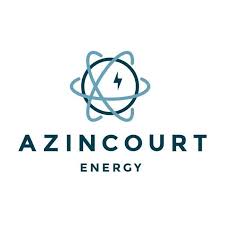
VANCOUVER: Delayed due to a minor weather related issue, the 2021 winter drill program at the East Preston uranium project, located in the western Athabasca Basin, Saskatchewan, Canada, has commenced.
Azincourt Energy Corp. currently controls a 70% interest in the 25,000+ hectare East Preston project as part of a joint venture agreement with Skyharbour Resources and Dixie Gold Inc.
As previously reported the target area for the 2021 drill program is the conductive corridor from the A-Zone through to the G-Zone and is based on a compilation of results from the 2019 and 2020 drill programs, 2018 through 2020 ground based EM and gravity surveys, and property wide VTEM and magnetic surveys.
Drilling has commenced south of the A-Zone and will continue southwest along the AB and G-Zones.
The first hole of the 2021 program is designated to test a strongly disrupted portion of the A-Zone conductor in the vicinity of a left-lateral fault offset and transition from northwest to north trending controlling structure. The target is further strengthened by a localized gravity low feature at depth. The hole is located 500m north of 2019 hole EP19001 which successfully intersected graphite-quartz-pyrite laden fault zones.
“We are excited to begin seeing results from the 2021 drill program,” said Exploration Manager, Trevor Perkins. “These drill results will confirm and refine our exploration model for the East Preston Project”, continued Mr. Perkins.
The 2021 exploration program will comprise a minimum a 10-12 hole, 2000-to-2500 meter diamond drill campaign. TerraLogic Exploration and Bryson Drilling have been contracted to execute the drill program, which is being conducted under the guidance and supervision of Azincourt’s Exploration Manager, Trevor Perkins, P.Geo, and Jarrod Brown, M.Sc., P.Geo, Chief Geologist and Project Manager with TerraLogic Exploration.
The 2020 HLEM survey completed in December indicates multiple prospective conductors and structural complexity along the eastern edge of this corridor. Drilling in the A zone suggests this structural corridor hosts significant graphitic packages within strongly sheared and faulted host lithologies, indicating an environment conducive to fluid movement and uranium deposition.
Multiple prospective conductive, low magnetic signature corridors have been discovered on the property. These distinct corridors have a total strike length of over 25 km, each with multiple EM conductor trends identified.
Ground prospecting and sampling work completed to date has identified outcrop, soil, biogeochemical and radon anomalies, which are key pathfinder elements for unconformity uranium deposit discovery.
The East Preston Project has multiple long linear conductors with flexural changes in orientation and offset breaks in the vicinity of interpreted fault lineaments – classic targets for basement-hosted unconformity uranium deposits.
These are not just simple basement conductors; they are clearly upgraded/enhanced prospectivity targets because of the structural complexity.
The targets are basement-hosted unconformity related uranium deposits similar to NexGen’s Arrow deposit and Cameco’s Eagle Point mine. East Preston is near the southern edge of the western Athabasca Basin, where targets are in a near surface environment without Athabasca sandstone cover – therefore they are relatively shallow targets but can have great depth extent when discovered.
The project ground is located along a parallel conductive trend between the PLS-Arrow trend and Cameco’s Centennial deposit (Virgin River-Dufferin Lake trend).
Azincourt Energy is a Canadian-based resource company specializing in the strategic acquisition, exploration, and development of alternative energy/fuel projects, including uranium, lithium, and other critical clean energy elements. The Company is currently active at its joint venture East Preston uranium project in the Athabasca Basin, Saskatchewan, Canada, and the Escalera Group uranium-lithium project located on the Picotani Plateau in southeastern Peru.